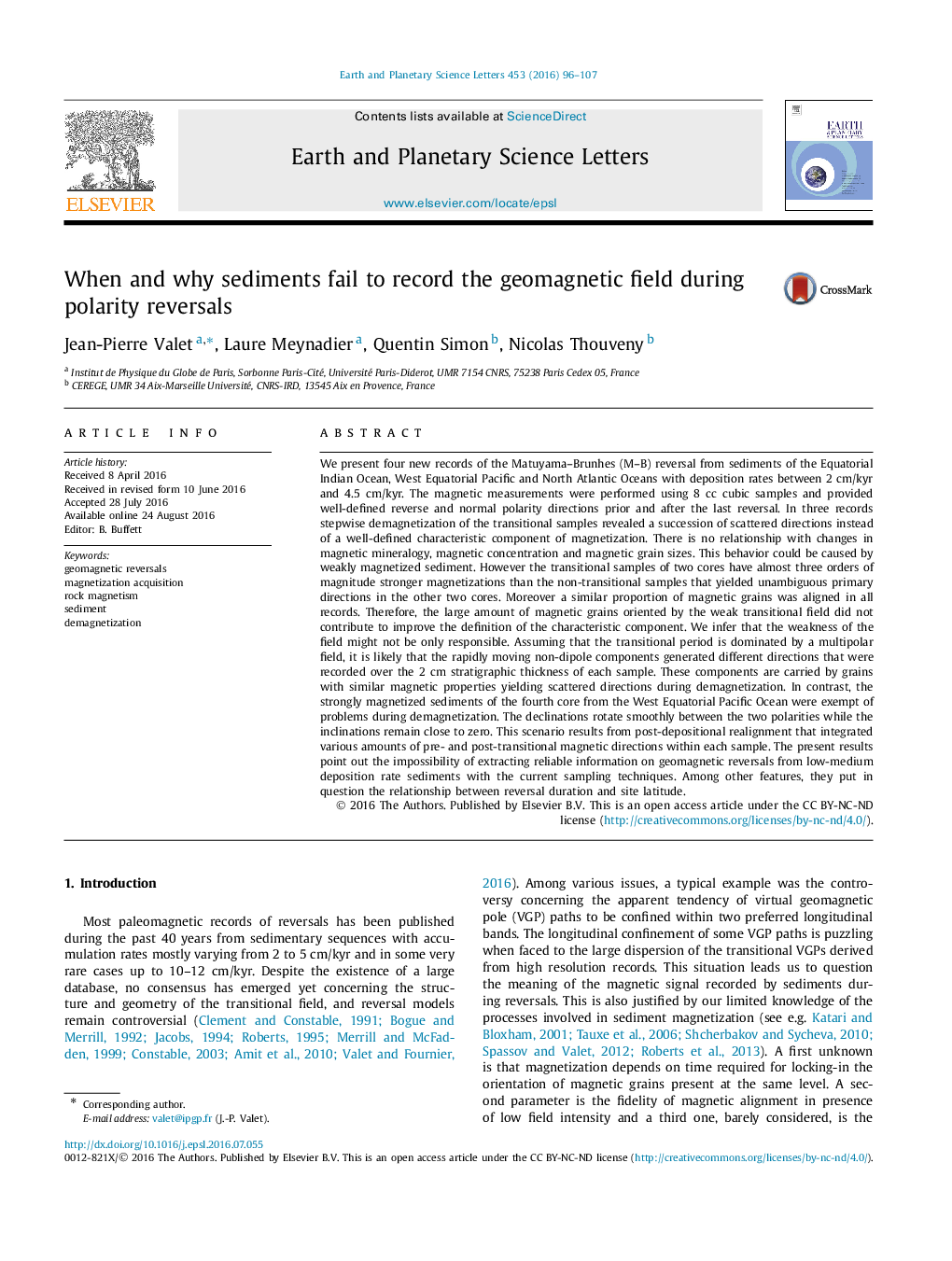| کد مقاله | کد نشریه | سال انتشار | مقاله انگلیسی | نسخه تمام متن |
|---|---|---|---|---|
| 6427146 | 1634703 | 2016 | 12 صفحه PDF | دانلود رایگان |
- Reversal records from sediments with v<5cm/kyr did not provide suitable directions.
- No characteristic component is isolated from weakly and highly magnetized sediments as well.
- Rapid field changes are integrated within a 2 cm sample and yield multiple magnetic components.
- When present post-depositional processes smear out the signal and provide unsuitable records.
- Current paleomagnetic techniques are not appropriate for reversal studies from sediments.
We present four new records of the Matuyama-Brunhes (M-B) reversal from sediments of the Equatorial Indian Ocean, West Equatorial Pacific and North Atlantic Oceans with deposition rates between 2 cm/kyr and 4.5 cm/kyr. The magnetic measurements were performed using 8 cc cubic samples and provided well-defined reverse and normal polarity directions prior and after the last reversal. In three records stepwise demagnetization of the transitional samples revealed a succession of scattered directions instead of a well-defined characteristic component of magnetization. There is no relationship with changes in magnetic mineralogy, magnetic concentration and magnetic grain sizes. This behavior could be caused by weakly magnetized sediment. However the transitional samples of two cores have almost three orders of magnitude stronger magnetizations than the non-transitional samples that yielded unambiguous primary directions in the other two cores. Moreover a similar proportion of magnetic grains was aligned in all records. Therefore, the large amount of magnetic grains oriented by the weak transitional field did not contribute to improve the definition of the characteristic component. We infer that the weakness of the field might not be only responsible. Assuming that the transitional period is dominated by a multipolar field, it is likely that the rapidly moving non-dipole components generated different directions that were recorded over the 2 cm stratigraphic thickness of each sample. These components are carried by grains with similar magnetic properties yielding scattered directions during demagnetization. In contrast, the strongly magnetized sediments of the fourth core from the West Equatorial Pacific Ocean were exempt of problems during demagnetization. The declinations rotate smoothly between the two polarities while the inclinations remain close to zero. This scenario results from post-depositional realignment that integrated various amounts of pre- and post-transitional magnetic directions within each sample. The present results point out the impossibility of extracting reliable information on geomagnetic reversals from low-medium deposition rate sediments with the current sampling techniques. Among other features, they put in question the relationship between reversal duration and site latitude.
Journal: Earth and Planetary Science Letters - Volume 453, 1 November 2016, Pages 96-107
